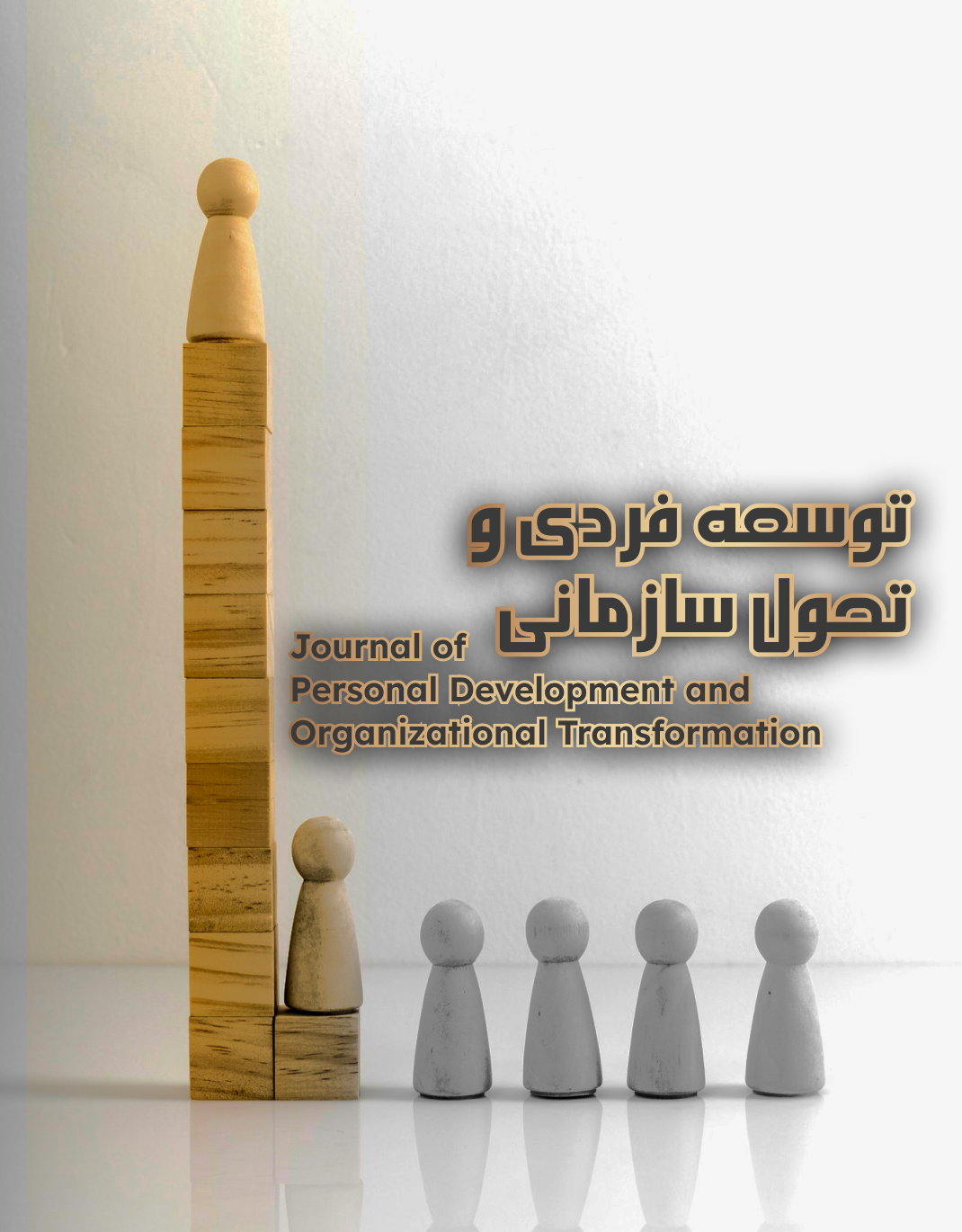The Role of Microcredit Funds in Empowering Rural Women Entrepreneurs
Keywords:
Bahar (city), Economic empowerment, Rural women, Microcredit fundAbstract
The present study was conducted with the aim of investigating the role of microcredit funds in empowering rural women entrepreneurs in Bahar County, Hamadan Province. The research method was survey–analytical, and the statistical population consisted of 360 women who were members of 12 rural microcredit funds in this county. The sample size was determined as 400 individuals (200 members and 200 non-members) using Cochran’s formula. The data collection instrument was a questionnaire, the validity of which was confirmed by experts, and its reliability was measured using Cronbach’s alpha. For data analysis, statistical tests including T-test, ANOVA, and correlation coefficients were applied. The findings indicated that women who were members of the funds demonstrated higher economic empowerment (t = 4.435, p < .001) and psychological empowerment (t = 2.170, p < .05) compared to non-member women. However, no significant difference was observed in social empowerment (t = 1.093, p = .275). In addition, a positive and significant relationship was found between the duration of membership in the fund (r = .204, p < .05) and the amount of loans received (r = .277, p < .01) with women’s empowerment. Women with personal savings also showed higher levels of empowerment (t = 6.381, p < .001). The results reveal the positive impact of microcredit funds on the economic and psychological empowerment of rural women entrepreneurs. It is suggested that to increase the effectiveness of these funds, measures such as raising loan ceilings, providing diverse financial services, offering entrepreneurship and business management training, and organizing psychological empowerment workshops should be implemented. Furthermore, greater attention should be given to women’s social empowerment through encouraging social participation and promoting education on citizenship rights.
Downloads
References
Abdul, B., Jing, Z., Wang, L., & Rabeeu, A. (2024). Assessing the Impact of Employee-Centric Digital Transformation Initiatives on Job Performance: The Mediating Role of Digital Empowerment. Strategic Management, 29(2), 5-18. https://doi.org/10.5937/straman2300057r
Al-Shami, S. S. A., Majid, I., Mohamad, M. R., & Rashid, N. (2017). Household welfare and women empowerment through microcredit financing: Evidence from Malaysia microcredit. Journal of Human Behavior in the Social Environment, 27(8), 894-910. https://doi.org/https://doi.org/10.1080/10911359.2017.1345341
Babaei Amin, M., Baradaran, M., & Foroozani, M. (2020). Evaluation of microcredit funds for rural women in Lorestan Province. Village and Development Quarterly, 23(2), 135-156.
Babaei Amin, M., Baradaran, M., & Forozani, M. (2019). Evaluation of rural women's microcredit fund in Lorestan Province. Village and Development Quarterly, 23(2), 135-156.
Berraies, S., Bchini, B., & Houaneb, A. P. (2024). Employees' empowerment and ambidextrous innovation: knowledge sharing as mediator and organisational trust as moderator. European Journal of International Management, 23(4), 648-676. https://doi.org/10.1504/EJIM.2024.139615
Ding, Z., Fan, X., & Zhang, J. (2024). Self-Employed Versus Paid-Employed: What are the Different Preferences for Microfinance? Experimental Evidence From Rural China. Sage Open, 14(2). https://doi.org/https://doi.org/10.1177/21582440241239807
Faghiry, M., Zerafshani, K., & Ali Bigi, A. H. (2017). Examining the impact of microcredit funds on the empowerment of rural women in Kermanshah Province. Village and Development, 17(3), 1-22.
Faqiri, M., Zarafshani, K., & Ali Beigi, A. H. (2016). Investigating the effect of microcredit funds on the empowerment of rural women in Kermanshah province. Village and Development, 17(3), 1-22. https://doi.org/10.30490/rvt.2018.59402
Farzizadeh, Z. (2014). Examining the effects of microcredit funds on the growth of rural women's capabilities. National Conference on Women and Sustainable Rural Development,
Ghaffarian, S., Memarzadeh Tehrani, G., Mohammadi, N., & Farahmandian, A. (2024). Presenting a Model for Developing Employee Commitment in Iranian Government Organizations. International Journal of Innovation Management and Organizational Behavior (IJIMOB), 4(3), 55-67. https://doi.org/10.61838/kman.ijimob.4.3.7
Ghasemi, M., & Yar Ahmadi, M. (2020). Examining the role of the Hope Entrepreneurship Fund in the development of micro-businesses in rural areas (Case study: Villages of Kashmar County). Economic Sociology and Development, 9(1), 219-242.
Kord, B., & Abtin, A. (2013). Examining the factors affecting the development of rural entrepreneurship in Sistan and Baluchestan Province (Focusing on the development of rural growth centers, information and communication technology development, and rural women's empowerment). Journal of Geography and Development, 11(32), 1-14.
Kumar, D., Hossain, A., & Gope, M. C. (2013). Role of micro credit program in empowering rural women in Bangladesh: A study on Grameen Bank Bangladesh Limited. Asian Business Review, 3(4), 114-120. https://doi.org/https://doi.org/10.18034/abr.v3i4.287
Lin, L., Wang, W., Gan, C., & Nguyen, Q. T. (2019). Credit constraints on farm household welfare in rural China: Evidence from Fujian Province. Sustainability, 11(11), 3221. https://doi.org/https://doi.org/10.3390/su11113221
Mahdizadeh Rostam, M., Kowsaryan, S., Montazergahim, S., Panahi, H., Panahi, M., & Akbarpour Fard, M. (2024). Identifying and predicting empowerment factors based on organizational structure and knowledge management among employees of Bank Melli in Fars Province. First National Congress on Sustainable Development and Social Responsibility: Challenges and Solutions, https://civilica.com/doc/2170200/
Mozafari, M. M., & Ziaei, M. S. (2016). Investigating the effects of the microfinance credit fund on the managerial empowerment of rural women case study: Alamut region. Investment Knowledge, 6(24), 231-250.
Mozaffari, M. M., & Ziaei, M. S. (2017). Examining the effects of microcredit funds on the level of managerial empowerment of rural women (Case study: Alamut region). Investment Knowledge, 6(24), 231-250.
Namjuyan Shirazi, Z., Abbasi, S., & Dehghanpour, M. (2014). Empowering rural women through the formation of funds to support the development of agricultural activities. National Conference on Women and Sustainable Rural Development,
Nourai, M., & Saadi, H. E. (2013). Microcredit funds and empowerment of rural women. National Conference on Women and Sustainable Rural Development,
Nozaii, M., & Saadi, H. (2014). Microcredit funds and the empowerment of rural women. National Conference on Women and Sustainable Rural Development,
Shah, S. (2024). Effect of Psychological Empowerment on Employee Job Satisfaction of Nepalese Commercial Banks. Nep. J. Finance, 11(2), 224-241. https://doi.org/10.3126/njf.v11i2.68826
Shedid*, M. (2024). The Impact of Rapid Digital Transformation on Employee Empowerment: Evidence From the UAE Banking Sector. International Journal of Business and Applied Social Science, 18-28. https://doi.org/10.33642/ijbass.v10n1p2
Sinan, G., Ahmet, T., & Özlem, D. (2024). A Study on the Effect of Employee Empowerment on Work Engagement. Mehmet Akif Ersoy Üniversitesi İktisadi Ve İdari Bilimler Fakültesi Dergisi. https://doi.org/10.30798/makuiibf.1395017
Tariqi, E., & Haghighi, M. (2023). Examining the Role of Efficient Management on Employee Empowerment With an Emphasis on Purposeful Learning and Utilizing Educational and Human-Building Lessons. Second National Conference on Family and School Studies, Bandar Abbas.
Tretiakov, A., Jurado, T., & Bensemann, J. (2023). Employee Empowerment and HR Flexibility in Information Technology SMEs. Journal of Computer Information Systems, 63(6), 1394-1407. https://doi.org/10.1080/08874417.2022.2158962
Vibhuti, T., Soumya, Sanskriti, S., & Rohan, V. (2024). A study on employee empowerment in it sector. https://doi.org/10.62823/7.1(ii).6520
Yatiningrum, A. (2024). Influence of work discipline and training on the performance of social service employees, women's empowerment and child protection in Probolinggo. Digital Business: Tren Bisnis Masa Depan, 15(1), 87-91. https://ejournal.cria.or.id/index.php/db/article/view/150
Zeer, I. A., Ajouz, M., & Salahat, M. A. (2023). Conceptual Model of Predicting Employee Performance Through the Mediating Role of Employee Engagement and Empowerment. International Journal of Educational Management. https://doi.org/10.1108/ijem-03-2023-0095
Downloads
Published
Submitted
Revised
Accepted
Issue
Section
License
Copyright (c) 2025 Rohollah Rajaei (Author); Shohre Taj; Simin Armaghan (Author)

This work is licensed under a Creative Commons Attribution-NonCommercial 4.0 International License.






